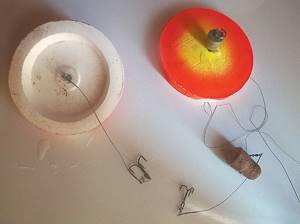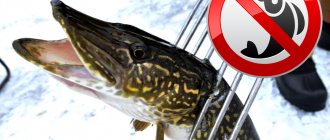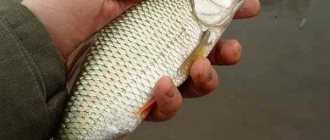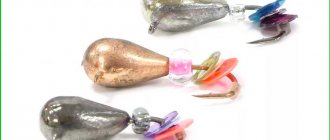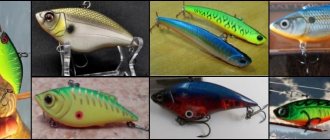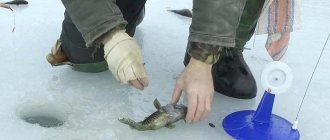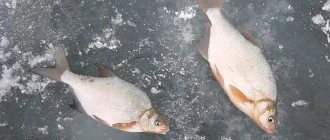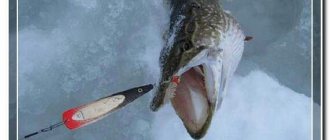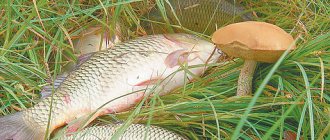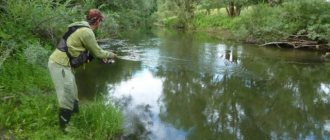In summer, the coastal areas of many reservoirs are covered with grass.
Such areas are an excellent place for a predator to ambush, and pike can always be found here. You can’t count on catching trophy specimens; they stay away from the shore in holes, on edges and in snags.
But small and medium- sized pike bite well in the grass. However, fishing with a spinning rod is not easy here; for this you need to choose the right tackle and bait.
Pike in the thickets - when and why
The abundance of green reeds, duckweed and algae always attract fish and aquatic invertebrates. Small grass pike graze in these lands until they grow up. The large one occupies grassy shallows, usually at the beginning of the warm season - with warming water in the spring and until the end of summer, beginning of autumn. Coastal thickets of water lilies, outcrops of reeds in the depths, windows of thickets - in the summer you can find a trophy toothy beast here, and not only on deep edges and snags.
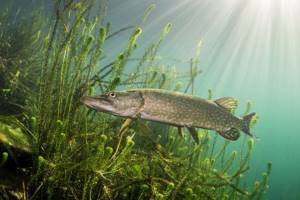
- Seasonal migrations of pike from the depths to the grass and back are obvious in some reservoirs, but not in others. For example, on small rivers and shallow ponds, where there are no classic pike snags and holes, you need to look for the predator in or near the thickets throughout the entire season.
- Grass thickets attract the spotted hunter not only because of the abundance of food. Grass and algae are natural shelter for pike. Pike is an ambush predator ; it prefers to stand in a convenient place, waiting for its prey, rather than chasing it, like a perch or asp.
- Pike does not particularly favor heat and bright sun, preferring to stay in the shade and coolness of the water thickets. Only in autumn or early spring, warm sunny weather can, on the contrary, provoke the predator to come out. In summer, she usually hunts at dawn or in cloudy weather, when the light level drops .
- An obvious advantage of summer pike fishing with a spinning rod is that you can catch it in the grass during the day in the heat, on a bright sunny day. While on open water - only in the morning and evening, or if it is cloudy.

How to catch pike in the reeds

Our passive participation in the form of installing a girder and removing fish was still there, but somehow it didn’t catch on.
A couple of times we caught 5-6 pikes per 10 poles, and a couple more times we were left without a catch.
And it was already autumn, winter jackets, a good wave, with a boat jumping on it, and the distances were quite long.
But the most important drawback was that the girders had to be checked in any weather. Some kind of obligation.
I also tried a non-catch popper.
It climbed literally everywhere and did not catch either the grass or the coastal bushes on which it was blown by the wind. But he caught fish very rarely.
There were a lot of pike attacks, but all of them, at best, dragged 2-3 meters and left.
Read the material “Spinning in the pre-winter”
There were attempts to dunk an unloaded twister into the windows, and pikes also attacked it. But this required transportation in a boat and the use of a long rod, which does not fit well with fishing from a boat. Yes, and pike, although we did come across them, were not as often as we would like.
As a result, as always, we fished on the edge of the reeds and licked our lips at the powerful splashes in the inaccessible grass. And the other day the situation turned out to be even funnier. On the river, when the water level dropped, the pike always rolled into the holes, and there were extremely many of them there. But as one might expect, there were no less fishermen in these holes. And this, of course, was stressful.
The size of the fish depended on the boat, or more precisely on the power of the engine. In the first hole, non-motorized anglers were catching squints. The second one was reached by weak motors, and the owners could count on pike in the range of 1-2 kilograms. But to the next holes and their more interesting inhabitants it was necessary to go on a good motor, bypassing numerous shallows. It wasn't always like this. The water level did not fall, and such fishing was cancelled.
This year, everything turned out differently for me. Firstly, I switched to a light motor, and my dreams did not go beyond the second pit.
Secondly, the weather was frightening with wind, and the mood was not quite festive. There were a lot of cars on the shore and boats in the first hole. A sure sign that the pits are working. While the boat is being assembled, you always have time to assess the situation.
Just like on TV, right in front of you, 8-10 spinners are digging up a hole. They shift and change the composition, but everyone is busy fishing. Almost always in such a situation it was clear who was catching and who was not.
This time there was sadness hovering over the pit. I didn’t see a single bite and was skeptical about my success. Still, I’ve already switched to live bait fishing for a couple of months, and my hands began to forget what jigging in the pits is.
A young guy swam to the shore with traces of sadness on his face, and at first I decided not to put pressure on his sore spot. But tinkering around your boats in silence is not like a fisherman. I squeezed something approving out of myself, but the guy turned out to be talkative.
It turned out that he was not fishing in a hole at all, but found a place where not all the reeds had yet climbed onto the shore, and there, in an unimaginable shallow, he caught 4 pike. The size, of course, was not encouraging, but he talked about live bait, and small wobblers, and something else. But for some reason I ended up with chub wobblers.
Read the material “Combined weapons and the modern hunter”
I swam past the bored spinners in the pit and stood at the place where I had spotted this guy with my keen eye at the entrance to the river.
Depth 30 centimeters. Silt without a single blade of grass or snag. I tried a spinner, a surface wobbler 10 centimeters long, and a light jig. All this is 5-6 throws. The fish, meanwhile, indicated their presence with whirlpools, volcanoes of silt raised from the bottom and splashes of fry.
The pike reacted quickly to my favorite “Vulcan”. And then others, but not the rest. The bay was not only small, but also small, and even cute - that’s undeniable. And when the wind carried me to the shore, there, in the remnants of the reeds, there was such a commotion that the darkness hid everything with a diameter of about five meters around the boat.
At first I thought that I was in a den of pikes, but it turned out that the entire coastal area was simply filled with them. It was believed that due to the abundance of fry, the pike quickly gorge itself and stands in the remnants of the reeds, digesting the food. Then 1-2 go hunting again, and they really like my wobbler. A wobbler with a meter of depth naturally furrows along the bottom, but this does not interfere with either the pike or me.
|
| Photo: Pavel Elizarov. |
Having caught 8 pike in 3 hours, the oldest of which turned out to be 1,800, I left wondering how I could catch them all in their den, and not wait for one of them to get hungry and go for a walk. This is not greed or greed at all, but a desire to come up with something new.
That's always been the main thing about fishing for me - solving the puzzle. I came up with the idea of returning to a long rod and dipping live bait or twister in the coastal zone.
There was bait, and the next day, despite the endless rain in the forecast, I went to implement my idea. It turned out not to be working. A strong wind, a depth of 10 cm at the water's edge and fiddling with a long fishing rod quickly cooled my ardor.
In the best case, you had to stand at a point and simply lower the live bait into the water and wait. But the wind bent the reeds and my rod too. In short, it didn't work out.
Read the material “The practical aspect of cleaning weapons”
As a result, I returned to fishing with a wobbler and caught my 7 pike. But I discovered another interesting point. Nearby, a piece of reed about 50 meters long separated from the shore. There the wind interferes even more, but the pike fuss there is simply exciting. The reeds explode with powerful bursts and...
And for some reason the fish don’t react to my baits at all. Everything is the same as at the shore, but not a single bite. And it’s not even a matter of offense towards the pike, but the fact that my brain, tirelessly struggling with pike riddles, began to think again about how to defeat these pikes. And another idea was born. The previous one did not justify itself, but this is one of the options for a scientific experiment. I will find out tomorrow how events will develop further. Then I will publish my bold experiment.
The next day my next experiment turned out to be successful. Now it can be described. The gist of it is that I used a standard circle. I removed the rod, tied a 15 cm long leash into the hole and secured it on top. The end result was a funny design. A circle to which the leash and tee are directly attached.
For testing, I made two such circles and put a roach on one tee, and a sopa on the second. Both fish touched the bottom in places, but a light breeze drove them to the edge of the reeds, which is what I was counting on. There was no time to guard the mugs, because no one canceled the spinning rod.
The experiment almost failed for the reason that there were much fewer pikes than the day before, and they behaved calmer in the reeds. But, returning an hour later, I found one of the circles with difficulty in the thick of the reeds and took a long time to get to it. The pike at such a depth shied away from the boat.
As a result, I hooked the circle and the fish into the landing net. The pike pulled one and a half kilograms. And the pleasure from my invention increased significantly. Some subtleties have also emerged that need to be addressed.
First of all, the new mugs are clean and the bottom surface is bright white. And since the bait is right under it, it scares away the pike. Secondly, you still need to give the pikes at least a meter of free movement. As a result, I tied a meter of braid to the circle and a pike float on it. Now the depth was determined by this float, and the bait was swimming a meter from the circle, and not directly under it.
Read the material “Underwater bottom floats: where and how to use”
But life made adjustments to fishing and to the continuation of the experiment. I managed to go a few days later, and during this time the water dropped even more, and there were no pike at all in the bay I had chosen.
I'll have to postpone the experiment until next season, but now I'm confident that I'm on the right track.
Pavel Elizarov November 12, 2021 at 01:43 pm
Spinning in the bushes
Tactics for catching pike in the grass with a spinning rod are based on the basic principles of search and knowledge of pike behavior. The toothy one needs to be looked for, seduced, and experimented with wiring. If you get the right bait into the ambush zone of a pike and tempt it into aggression, you can get a bite even when it is not feeding.
However, not every thicket of reeds, sedges or algae is promising - you need to be able to look for pike, paying more attention to specific promising points. In addition, not all reeds, due to their density and location, are accessible to fishing. Naturally, when targeting thicket fishing, you need to take into account the basic principles of fishing with a spinning rod for pike
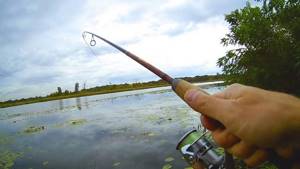
Promising places
Fishing for pike in the grass on small rivers - searching and quickly catching the most promising places. Such reservoirs abound in places where, in the opinion of the fisherman, pike can lie in ambush. However, sometimes you need to walk kilometers and cast hundreds of points to catch a good pike - especially in places frequented by anglers.
On an unfamiliar body of water, it is better to spend time searching and checking many places than to stand on a convenient platform and uncontrollably hit one point with a spinning rod. You need to be able to read a body of water; unpromising places can simply be passed by.

Promising points:
- Transitions from depth to shallows before and after rifts, overgrown with long underwater algae. In hot weather, pike can stand in this grass and on the rapids themselves, in the current.
- Thickets of sedge and reeds at the confluence of channels and tributaries.
- Separate algae and reed islands at sufficient depth.
- Entrances and exits from grass pits
- A wall of reeds extending into the depths.
- Coastal thickets of water lilies.
- On large bays overgrown with water lilies - in windows and on the border with clean water.
- Local snags, windows, piles of plant debris.
- On completely overgrown ponds, bets and bays, it is better to fish from a boat, checking the windows and areas that allow you to cast a spinning rod.
- Fully overgrown toad grasses, covered with duckweed, also become a haven for pike - if there is something to eat there.
- Catching pike in thick grass on shallows can be successful in the spring, when the toothy one comes out to bask in the sun. With the onset of heat, it is better to look for it at a depth of at least about a meter, where it is cooler.
- On rivers and reservoirs, a large number of pike in warm weather move closer to the shore - to overgrown bays, which serve as a refuge for forage crucian carp, roach and perch.
Vacky
For fishing in shallow waters and in “toad beds”, a fishing method known as wacky has increasingly begun to be used. Literally translated, veki is interpreted as “stupid worm”, “stupid worm”, which is explained by the strange movements of the bait, however, similar to the convulsive movements of a living worm that has fallen into the water. This “style” of wiring a silicone worm is achieved by a non-standard way of attaching it, where the bait is pierced not lengthwise, as on an offset hook, but across, like a live worm on a hook. True, here it is not mounted with a “stocking”, but is left with two freely moving tips. Often such fussy silicone worms arouse more interest in the predator than other baits. Various silicone worms are widely used for fishing. They are often made directly during fishing from vibrotails and rippers, simply by cutting off the saggy belly and tail of the bait. Edible rubber is usually used as a material for baits. The veki method is often very effective, when an artificial worm falls into a window among the vegetation. It looks very natural, as if a living worm had fallen into the grass, wriggled convulsively and sank to the bottom.
Hooks for weki are large, semicircular in shape. They look a bit like carp hooks. Such special hooks often have protection against snagging, like on non-snagging spinners. In addition, there are also loaded hooks for fishing with weckies. They resemble a lightweight jig head and weigh about 2 g.
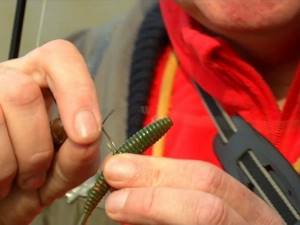
The method of retrieving is jerky, which makes the bait wriggle, sink to the bottom, float up, in short, make movements that are natural for a sinking worm.
Fishing tactics and techniques
Directly on the reservoir, the tactics of working with a spinning rod depend on the configuration of the thickets and the set of available non-hooking baits. Some can be fished in the grass conditionally - you need at least a meter of depth and free passages. On surface hooks and an unloaded jig you can squish almost anywhere where the reeds do not grow in a continuous thick wall.
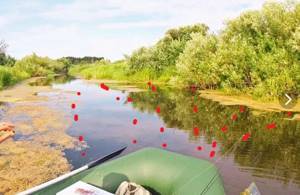
Having a boat makes fishing easier. It is not always possible to get to a promising point from the shore, but by boat you can simply sail to any place. In some water areas you can get to the windows by wading in waders or waders.

Fishing for pike in the grass should be combined with checking clean areas nearby with regular bait. That’s why a boat is needed – so as not to lose expensive wobblers and favorite lures. Often the seemingly clear strip of water near the reeds is filled with snags, remnants of last year's vegetation and mud - classic pike grounds.
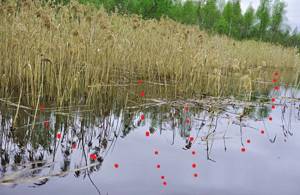
Fishing in the grass is not a separate event, but an addition to regular spinning fishing on the net. The approach is the same - we experiment with baits and wiring. On any bait you can use uniform, intermittent or jerky wiring. The jig does not work in the usual position - we hook it in the lateral plane or generally according to the wacky principle. It can be difficult to persuade a well-fed summer pike to bite.

With experience comes an understanding of which window to throw the bait into. Sometimes it takes longer to get to it than it takes to catch it, breaking through the thicket. And the very first cast sometimes rewards the toothy one, which is intractable in open water.

Catching pike in the grass - how to catch
The most correct approach to catching a predator in the grass is to throw the bait “to certain death.” The more terrible the outcome is in the thickets of grass for bait, the more likely it is that a good predator will bite.
You can take care of the bait and move it away from the grass. The result will be a complete absence of pike on your kukan.
Or you can throw the bait into the thickets, drag it through the most dangerous places, lower it into small windows of free water in the grass carpet - and fat, well-fed fish will occupy the entire trunk of your car when you go home from fishing.
By sending the bait “to certain death”, we doom ourselves to a good catch of pike in the grass.
So, we boldly throw the bait into the very thick of the grass, while understanding what we are doing and why. After the cast is completed, we begin the animation of the bait. It all depends on what kind of aquatic inhabitant our bait imitates.
If we fish with a wobbler that imitates a fry, then we need to animate the bait so that it behaves like a fry. The fry feeds at the bottom, freezes near the grass stems, and makes sharp movements to the right and left. The wobbler should move exactly the same.
If we fish with silicone that imitates a large leech, then all the movements of the leech must also be imitated by the angler. He should move the bait in smooth movements from bush to bush, just like a large lake leech moves.
Well, if we imitate the behavior and movements of a frog, then a slider like a Croatian egg or a silicone glider under a frog should move exactly like this amphibian.
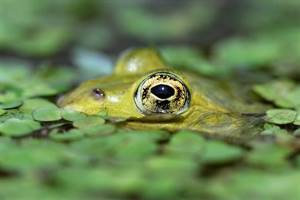
Imitating a frog, our baits should move exactly like this amphibian.
Correct animation of the bait is the key to successful spinning fishing - every angler who catches a fat predator in a pond knows this.
Spinning equipment
For pike fishing in the thickets, it is better to increase the caliber of the spinning rod, up to 40-50 grams according to the upper test. With an ordinary average spinning rod of 20-30 grams, you need to handle it carefully, especially when fishing, so as not to break it. Sometimes you have to drag the pike out. Therefore, a powerful short, fast-action spinning rod with a braid of at least 15 LB 0.14 mm is more suitable for such fishing. The cord can be placed even thicker - up to 0.2 mm; in overgrown water areas it will not arouse suspicion in the pike.
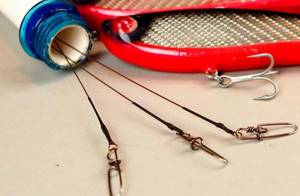
Selecting a location
In shallow water you shouldn't expect a good bite. The optimal depth is from 1 meter. Only in this case can you hope for success. At a depth of 2.5 meters, fishing is most effective. When choosing a place, before catching pike with a spinning rod in the grass, you need to inspect the area and pay attention to several areas where the likelihood of pikes increases:
- in the thickets of hillocks between deep currents, predators wait for victims from passing schools of peaceful fish;
- deep-sea channels with “islands” of grass, where hunters catch fry, frogs and other living creatures;
- thickets of reeds near river confluences are a goldmine for a spinning angler regarding the presence of pikes, they not only move around the place, but also extend 4 meters into free water;
- the grass within the pits hides the predators and they freely attack small fish or bait that accidentally fall in;
- fallen trees, logs and snags also indicate the presence of predators.
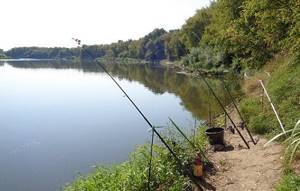
You need to choose the right place for fishing
Unhooked lures
We have already discussed how and what to use to catch pike in the grass in the article about the right non-snagging lures for pike. Here we will touch on more tactical and technical issues. Conventionally, when fishing in thickets, two groups of conditions are distinguished. This is free water for fishing in the thickness with sparse thickets and completely overgrown areas with rare windows. If lures for working in thick water can be used only in the first case, then surface jigs and unloaded jigs can be used in any variant.
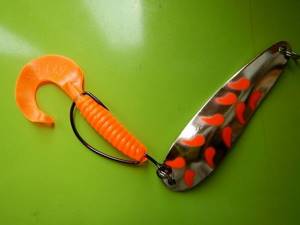
For wiring in thick areas
If there is a volume of water at least half a meter thick and several meters long, you can hold a regular spoon or wobbler in this layer, above the carpet of algae. Every angler has his favorite proven spinners or wobblers. A jig with light heads or unweighted is good for this. You need to select a speed for moving the bait so that it does not cling. With a jig without a tee on the belly, you can literally scrape across this carpet.
Despite the hype raised by marketers around special non-hooking baits, it is better to use regular proven spoons and spinners, modified for fishing in the grass. This issue is discussed in detail in the article about non-hooking .
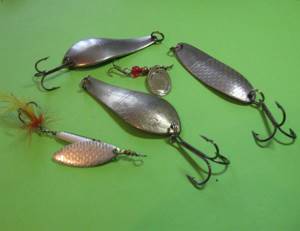
- With modified hooks - tees with antennae or offset hooks with silicone, the spoon can be carried through conditionally clean water filled with sparse vegetation and mud. In most light hooks on an obstacle, a slight twitch releases the bait and the retrieval continues.
- The bait can be held gently by shaking and twitching as it touches the grass.
- If it catches soft algae, we try to fish by pulling, cutting through the mud with sharp jerks of the rod. This is the so-called deep-diving pike fishing. But for this you need a hard leash, made of guitar string, and not a soft braided one.
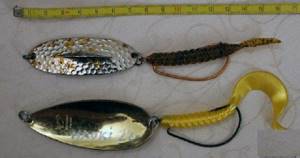
In addition to conventional oscillators and turntables converted to non-engaging, we also try:
- An unweighted jig or hinged on an offset jig with a hook pressed to the body of the bait. These are any twisters, vibrotails, crustaceans. For large pike, larger silicones are better.
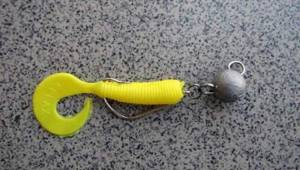
- Special planing lures without hooking.
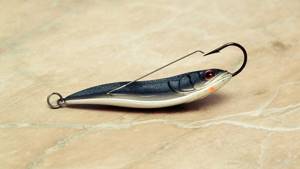
- Squelching poppers, crawlers, walkers - in separate windows.
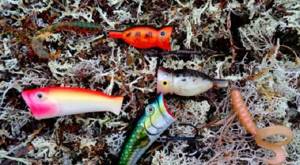
- Spinnerbaits are special baits that are essentially hook-free due to the voluminous skirt on the bait.
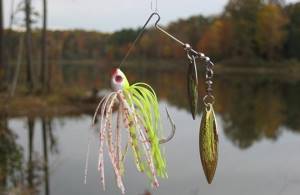
- Jig rigs for brush – drop shot, Florida, Carolina or Texas rigs.
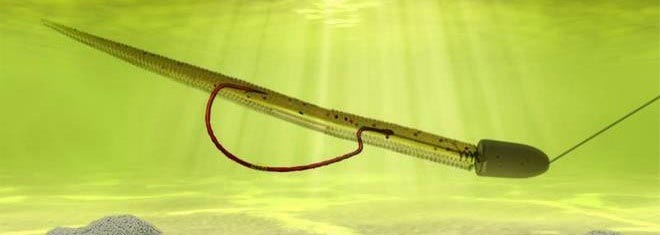
Surface baits
For dense thickets, we use special baits for catching pike in the grass - gliders (Croatian egg) and silicone imitations: non-hooking frogs, rubber duckies and mice. These baits can be pulled over the reeds and water lilies on top, dropping them into clean areas where bites usually occur.
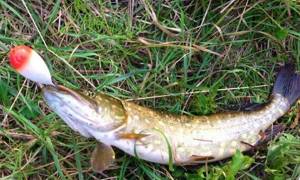
We also fish relatively clean areas - in the same places where we have already checked with deep baits. Sometimes pike ignore the placement of baits in the depths, but actively take the splashes of eggs or frogs on the surface.

Tactics for fishing in difficult places
In summer, the toothy predator is rarely found in clean areas of the reservoir. Plenty of cover creates ideal conditions for pike ambush. As a rule, fishing is difficult because the fish does not pursue the prey, but waits until it comes close to it.
Ideal points for a predator to ambush:
- edge of cattails and floating islands;
- clearings in duckweed;
- continuous carpet of hornwort;
- thickets of water lilies.
An important factor when searching for pike is depth. In summer, the spotted one hides in shallow waters, where there are plenty of small fish, tadpoles and frogs. The peak of activity occurs in the morning, although in cloudy and rainy weather pike can hunt during the day. After the spring rush, it is difficult to interest fish with artificial bait. To do this, you need to remember the key points of wiring. Monotonous animation tempts the predator more effectively, which distinguishes spotted fish from perch or pike perch. The drawing speed plays an important role. The artificial bait must work on the verge of failure, only in this case the fish comes out to attack. If you move the bait too quickly, the predator does not have time to make a dash out of the dense vegetation.
Read: Aggressive wiring. Hunting for big pike
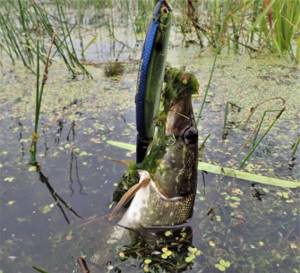
When fishing from a boat, the distance between the “anchors” is significantly reduced. One overgrown spot can be home to up to 5 toothy ones, so it is important to cover the area as densely as possible. In some cases, approaching a promising site from several sides helps. Thus, the angler changes the angle of presentation of the bait, which gives its results.
It is necessary to move along the coastline if fishing is on a large body of water or along the river bed if fishing is on a small river. Thus, spinners throw two banks from the center, having equal chances of success. On small rivers, anchors are practically not used, and fishing is carried out by rafting.
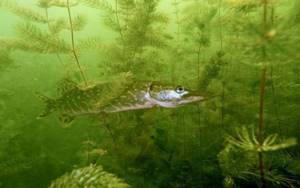
Float
Some fishermen prefer to catch pike with live bait using a float rod. Live baits are often used for pike along with regular float fishing, for crucian carp or roach. The best bait for catching pike in the grass is, naturally, a live fish caught right there. In some reservoirs, pike take on a live frog.
You need a powerful fishing rod, capable of pulling a predator out of the reeds without much fighting. Live bait is thrown into the windows so as not to tangle the tackle as a result of movements - into the middle of the window. When fishing from the shore, we shorten the working descent and position the rod so that the live bait does not drag the equipment under the shore. More information about fishing for pike with a fishing rod using live bait

Fishing technique

- uniform;
- jerk;
- stepped.
On a pond, you need to try different animation options to determine which one attracts pike better on a particular day. When the bait hits the window among the grass, you can stop the wiring and let it fall to the bottom, and then reel in the line again. This technique often provokes a predator to bite.
When fishing with a retractable leash, you need to cast exactly into the window among aquatic vegetation, let the rig sink to the bottom, and then begin the animation. To revive the bait and attract pike, you need to perform measured twitches and swings of the rod. You can also tap the blank with your free hand while keeping the line taut.
The spinnerbait can be driven a uniform or wavy retrieve. In the second case, it is necessary to steadily rotate the reel handle, while making continuous smooth swings with the tip of the spinning rod. This wiring method is better suited for open water .
When fishing with walkers, poppers and crawlers, jerk is used . In this case, a jerk is performed with the rod, and then the slack of the fishing line is reeled in, followed by another swing with the spinning rod. With this animation, walkers scour from side to side, and poppers and crawlers, with each jerk, capture water from the surface and throw it forward, creating noise that attracts pike.
Fishing with a spinning rod in the grass is not an easy task, but it brings good results. In summer, pike always hang out in the thickets. Lying in ambush, she lies in wait for her prey. If the bait is within its reach, it will certainly rush to attack. This kind of fishing is very interesting and exciting. With the right approach, it will bring many trophies and bring a lot of fun.
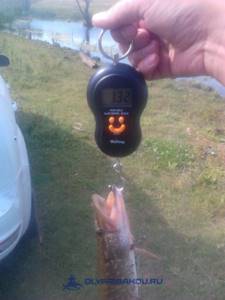
Mugs and girders
It is better to purposefully catch pike in the grass with live bait from a boat on a set-up or mug. Supplies of any type are suitable. However, when fishing in the reeds, free movement must be limited so that the toothy fish does not get pulled too far into the wilds.
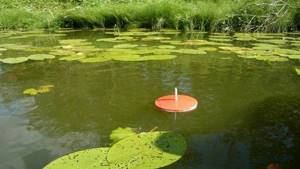
When making equipment for catching pike in the grass, we make the equipment thicker - so as to literally tear the fish out of the grass. We place the mugs in windows or on the borders of the reeds, and we tie the stands to stakes or strong sedge.
Subscribe to the channel:
YouTube channel RYBAFAN
We are VKontakte
Silicone baits
In the grass, pike are caught on a spinning rod using unloaded silicone; for such places, it is worthwhile to equip vibrating tails and twisters in a special way.
There is nothing complicated about the equipment; for this you need:
- silicone bait;
- offset hook of the required size;
- homemade string leash.
The hook is inserted into the silicone so that its tip is hidden in the back; the bend will allow this to be done. Next, the eye of the hook is inserted into the twist loop and secured. All that remains is to cast and perform the wiring correctly .
Minnow Spoon type spinners

These spinners were once produced only by the Rapala company under the name Rapala Minnow Spoon. They performed very well in grass, working best on vertically growing grass and in clear water windows among grassy islands.
Falling through the windows or during a pause along the edge, Rapala Minnow Spoon begins to sink, gently swaying its sides, pretending to be a sick or wounded fish.
If a pike is nearby, it cannot resist and will definitely attack the bait. In the summer, amid a general lack of biting, anglers who caught Minnow Spoon on the Rapala brought two dozen tails to the shore.
Lures
Selecting bait is the main task of fishermen. Classic baits with hooks catch excess vegetation and waste the fisherman’s precious time. Successful pike fishing in the grass occurs using baits:
- spinnerbaits;
- Croatian egg;
- spinner spoon;
- silicones;
- wobbler;
- frogs;
- non-hooking;
- jigs.
Spinnerbaits
The invention comes from the USA. Created for catching perch, but in domestic open spaces it has found application for luring pike. If you choose the right size, they become a universal bait for all freshwater predators. Large specimens are suitable for pike. This is a bait with lush plumage in the form of a skirt on one side and a curved petal on the other. The petal attracts with its movements, and the shape itself prevents it from getting tangled in the grass.

You can use a spinnerbait as bait
Croatian egg
A popular bait for predators, it does its job well in overgrown bodies of water. It does not get tangled in the grass, attracts attention, and is used for different wiring options.
Spinner spoons
The color of the bait plays an important role when choosing. The advantage of spinners is their casting range and variety of colors. The oscillating motion certainly attracts fish.
Silicones
Silicone baits used for fishing pike in the grass are vibrotails or twisters. These affordable, lightweight silicone lures are powered by currents. Pike will not lose sight of such an irritant. The disadvantage is that they wear out quickly, so silicones are stocked up in advance in unlimited quantities.
Wobbler
Wobblers are divided into deep-sea and surface. For successful fishing among the thickets, the second option is suitable. Pike prefer poppers that make a gurgling sound and crawlers that make a smacking sound.
frogs
Live frogs often become victims of the striped glutton. It is not surprising that baits imitating this amphibian appeared. If boring silicones and wobblers do not give the desired result, then you can safely use a frog. The likelihood of a bite will increase. It is adapted for fishing in the grass and you don’t have to be afraid of being left without bait.
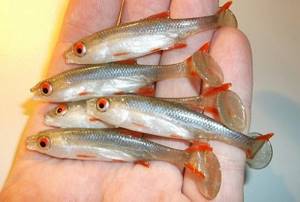
Silicone baits are also suitable
Unhooked
These are baits adapted to pass through the densest thickets. The hooks are protected from snagging by springs, fishing lines, and the body of the bait. The method of protecting the hook also depends on the type of non-hooking bait. However, the fish are perfectly caught and held on them.
Jiggy
Popular jigs in the form of bright silicone or foam fish. A lead sinker is attached to the “head” area, which goes under the water, lifting up a “tail” made of rubber, silicone or feathers. The hook point is directed upward, avoiding hooks. This bait is easy to make yourself.
Preparing gear
Fishing in the grass is different from fishing from the shore. When preparing gear, you should remember the standard rules:
- do not make long casts so as not to pull out a bunch of grass instead of fish;
- select the test up to 50 g, because the grass cannot not cling, but it gives weight to the rod;
- tightly wound fishing line on the reel ensures reliability when fishing, otherwise there is a high probability of breaks;
- for spinning pike fishing in the grass, it is better to grab a line;
- Be sure to use a leash without protruding parts.
The main tasks of a spinning rod are to cast accurately and withstand the load. A medium and light class rod up to 2 m long is suitable. A fast action spinning rod will cope with the task. It makes it easier to control the pike while fishing. There are no special requirements for the coils; whichever one you like best will do.
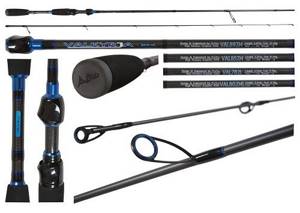
When preparing for fishing, you need to prepare your gear in advance
The most catchy lures for pike - characteristics
What are they, the most catchy lures for pike in the grass, what characteristics do they have, what are they?
- Firstly, these are baits from the category of “all-terrain vehicles”, baits that very weakly cling to the grass with both their body and hooks.
- Secondly, these are baits with a fairly active game, capable of seducing a predator and provoking its bite even in the smallest windows of clear water, or even without them at all.
- Thirdly, these are lures with explicit feedback, which allows the angler to control their retrieve. In grass conditions, it is very important to know whether it is a hook or a bite, because with a control hook, you can plant the bait according to “I don’t want it.”
Now let's look at the most characteristic representatives of this class. We present to your attention the most catchy lures for pike that catch the predator in the grass.
